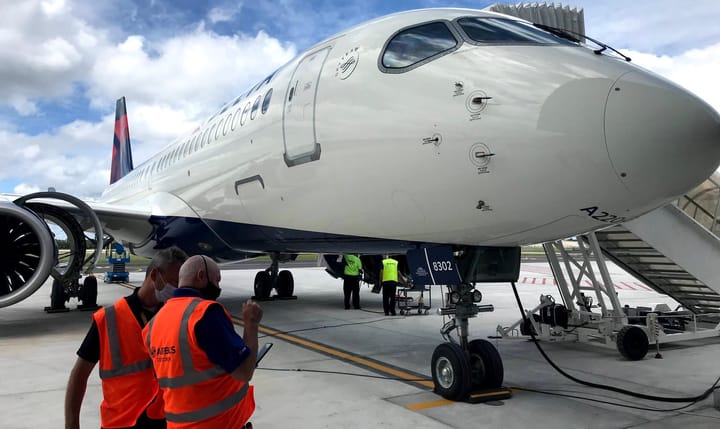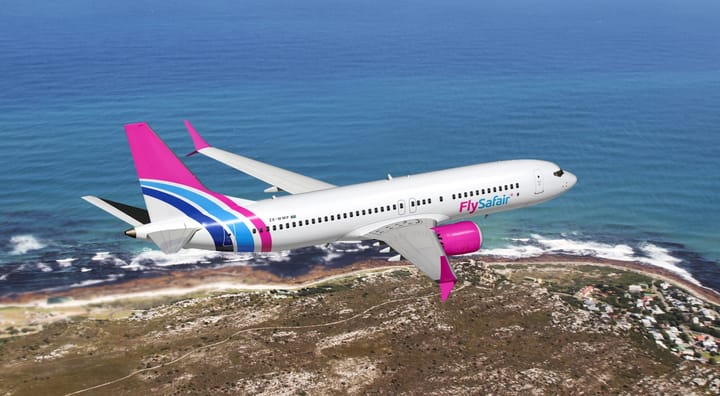When news broke that Voepass flight 2Z-2283 had crashed in Vinhedo, Brazil, video of the accident went viral within minutes of it occurring, showing the aircraft in what appeared to be an upright flat spin with engines still running.

The videos sent shivers down one’s spine, and it must have been an unimaginable last few seconds for those onboard. As always in the world of commercial aviation, an emotionless view needs to be taken to understand the root causes of the event in order to make sure that it doesn’t happen again. The only problem is that this was, on the face of it, completely avoidable.
As with every other airline accident in history, there is no one single factor that causes it. A chain link of events lead to an eventual outcome, and in this case it seems that the sub-events that lead to the accident could have been avoided, which is sadly so often the case. I say this knowing that the investigation is not complete, and this view must be taken as an informed opinion based on available evidence.
The above video clearly shows the aircraft in a flat spin, which in all likelihood came about as a result of a stall and loss of control. Those familiar with the history of twin turbo-prop accidents will have made connections almost at once with accidents from the past. Accidents that relate to icing.
When an aircraft’s wing becomes overwhelmed by ice build up that often occurs when it flies through certain cloud types or areas of precipitation, coupled with colder temperatures, ice can build up on wings very quickly. As we know however, systems exist to combat this phenomenon in the form of de-icing boots that run the length of the wings of an ATR-72, as is the case with many other similarly sized aircraft in it’s class such as the Dash 8 Q400. The function of the de-icing boots are to inflate on the surface of the leading edge of the wing, and so doing break off chunks of ice that have built up. These ice chunks can completely spoil the lift characteristics of the wing, and quickly result in a stall.
The problems that developed during this flight are potentially not new, and are well documented. The ATR-42 and ATR-72 models have long been known to be susceptible to icing conditions, a problem that was well established after the 1994 crash of an ATR-72 under similar circumstances. The American Eagle flight 4184 accident happened as a result of ice build-up, which lead to chunks of ice on the wings adversely affecting not only the wing’s lift characteristics, but also resulting in unexpected behavior of the ailerons due to aerodynamic disruption on the wing. A seemingly complicated set of circumstances that can make recovering the aircraft very difficult. In the flight 4184 final report, the NTSB is quoted as saying:
“The National Transportation Safety Board determines that the probable causes of this accident were the loss of control, attributed to a sudden and unexpected aileron hinge moment reversal that occurred after a ridge of ice accreted beyond the deice boots because: 1) ATR failed to completely disclose to operators, and incorporate in the ATR 72 airplane flight manual, flight crew operating manual and flight crew training programs, adequate information concerning previously known effects of freezing precipitation on the stability and control characteristics, autopilot and related operational procedures when the ATR 72 was operated in such conditions; 2) the French Directorate General for Civil Aviation’s (DGAC’s) inadequate oversight of the ATR 42 and 72, and its failure to take the necessary corrective action to ensure continued airworthiness in icing conditions; and 3) the DGAC’s failure to provide the FAA with timely airworthiness information developed from previous ATR incidents and accidents in icing conditions, as specified under the Bilateral Airworthiness Agreement and Annex 8 of the International Civil Aviation Organization.”
In simple terms, the ATR's wing had an issue with ice building up just aft of the deicing boots, negating the action of the boots in icing conditions.
In the wake of the 1994 accident, the FAA endorsed the implementation of modified deicing boots on the ATR-42 and ATR-72 models in the U.S that had a much wider coverage on the wing as a measure of preventing the build up from happening again. The modified deicing boots have since become standard on the ATR-72, however one has to wonder how effective the larger deicing boots would be if the aircraft were to encounter severe icing conditions, and in this case given the weather factors, it seems that the accident in question today could very well have suffer severe icing conditions.
The key question with the Voepass accident is why the crew ended up in severe icing in the first place, but this question will only be answered once the ATC communications and cockpit voice recordings are read and understood. Turbo-prop aircraft like the ATR and Dash 8 types often operate at altitudes where icing occurs most often, between 10,000 and 20 ,000 feet due to the nature of the performance of these aircraft, unlike larger jet aircraft that cruise well above these conditions. So one can assume that an aircraft like the ATR-72 would regularly encounter icing, and dealing with these conditions should be a practiced affair for a reasonably experienced ATR-72 pilot, depending of the area of the world they operate in.

Looking at the weather at the time of the accident, the aircraft is observed passing through a cold front that was moving through the area at the time, and given the altitude at the time (17,000 feet), the assumption that has been made widely in the media and by aviation experts alike that icing was a very prominent factor in this accident seems reasonable.
Avoiding these icing conditions are very important, and there are several reasons why the crew may have ended up in this position. ATC could have denied a request by the crew to divert to an area where icing was not as severe, or to climb to higher altitudes. However the published ATR procedures for escaping icing is very clear.

Looking at the published procedures above, it is clearly stated that pilots are to engage maximum continuous thrust, set propeller control to 100%, to disengage the auto pilot and escape from the icing conditions. It is here where we pause to look at factors that could have prevented the pilots from escaping (if it turns out that icing was indeed the most prominent cause).
Either the pilots were denied clearance to climb, or denied vectors away from the icing conditions. If ATC instructions were a factor here, it would have been up to the pilots to escape from the icing conditions and inform ATC once recovered. There is sometimes a certain amount of pressure to adhere to ATC instructions, but in an emergency situation, pilots are expected to do what is necessary to recover an aircraft from a dangerous situation and apologize later.
The other factor one could consider was that the pilots indeed elected to climb, but with degraded performance due to icing over the wings, struggled to escape to higher altitudes, and could potentially have ended up stalling the airplane in an attempt to outclimb the icing. This is a very likely scenario given that the aircraft was filmed in an upright spin that could very well have been induced when an attempt was made to outclimb the icing conditions.
Once the aircraft got into the spin, recovery was always going to be very unlikely. Some experienced twin-turboprop pilots have already stated online that aircraft like the ATR are incredibly difficult to recover when entering a spin due to the engines adding weight outside of the aircraft's center of gravity, and low rudder authority when forward airspeed is reduced to the point where rudder input becomes ineffective.
Once the final report of this accident is released, we will know what lead to the accident. But on the face of it, we may be looking at an accident that could have been prevented, and that Voepass Flight 2Z-2283 could have been a repeat of history.
Reference:
https://theairlinepilots.com/forumarchive/atr/atr-cold-weather-operations.pdf
https://www.ntsb.gov/investigations/AccidentReports/Reports/AAR9601.pdf





